How to Stop Dog Peeing in House When Alone: Expert Tips for a Clean Home
Have you ever come home to find that your furry companion has decided to turn your living room into their personal bathroom? Don’t worry, you’re not alone. Many dog owners face the challenge of their pets peeing indoors when left alone, and finding a solution can be frustrating.
Stopping your dog from relieving themselves inside the house is not only essential for maintaining a clean and odor-free home, but it’s also crucial for your dog’s overall well-being and training. Fortunately, there are several proven methods to help your canine friend break the habit.
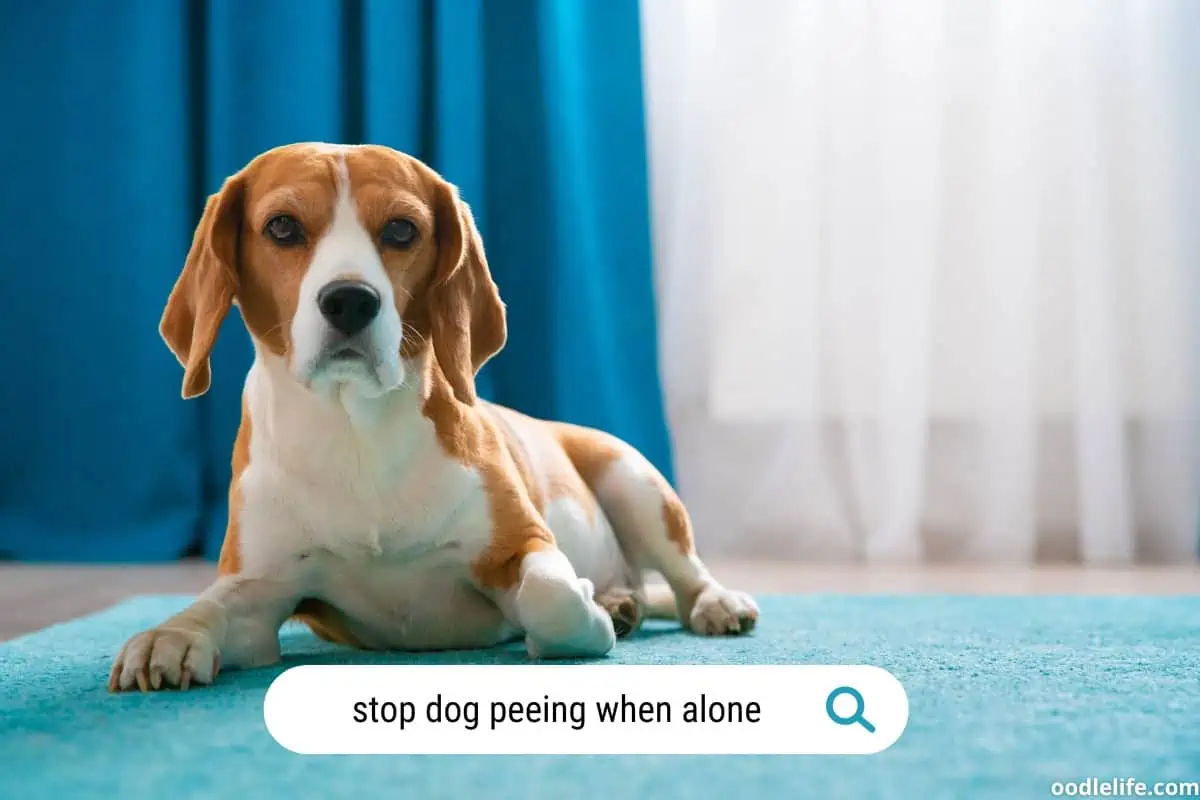
In this article, we will explore various techniques to tackle this common issue, ranging from recognizing the underlying causes to implementing practical strategies. So, say goodbye to those unwanted surprises and get ready to restore harmony between you and your four-legged friend!
Effective Strategies to Prevent Your Dog from Peeing Indoors While You’re Away
| Strategy | Star Rating | Description |
|---|---|---|
| Crate Training | ★★★★★ | Crate training provides a safe and comfortable space for your dog, and most dogs won’t soil their sleeping area. Ensure the crate is large enough for your dog to stand up and turn around, but not too large, as they may use one end as a bathroom. |
| Frequent Potty Breaks (before leaving) | ★★★★★ | Taking your dog out to potty right before you leave ensures that their bladder is empty. The more often you take your dog out, the less likely they are to have an accident indoors. |
| Hiring a Dog Walker or Sitter | ★★★★★ | Hiring a dog walker or sitter to take your dog out for potty breaks while you’re away can help prevent accidents indoors. They can also provide companionship and exercise, reducing the chances of your dog developing anxiety or boredom-related issues. |
| Puppy Pads or Indoor Dog Potty | ★★★★ | Puppy pads or an indoor dog potty can be a helpful solution for dogs that have difficulty holding their bladder while you’re away. However, this method may not be suitable for those who prefer outdoor potty training or if you want to discourage indoor elimination altogether. |
| Limiting Water Intake | ★★★ | You can limit your dog’s water intake before you leave to reduce the chances of them needing to pee. However, be cautious not to restrict water excessively, as your dog still needs to stay hydrated. Consult your veterinarian for guidance on appropriate water intake. |
| Anxiety Reduction Techniques | ★★★ | Some dogs may pee indoors due to separation anxiety. Using anxiety-reducing techniques, like leaving an item with your scent, playing calming music, or using pheromone diffusers, can help your dog feel more at ease while you’re away. |
Note that the effectiveness of these strategies may vary depending on your dog’s individual needs, age, and temperament. It’s important to experiment with different methods and consult your veterinarian to determine the best approach for your dog.
Why Dogs Pee in the House When Alone
When your furry friend is home alone, there are various reasons why they may choose to pee inside the house. To address this behavior, it’s helpful to understand the underlying causes. Below are some common explanations:
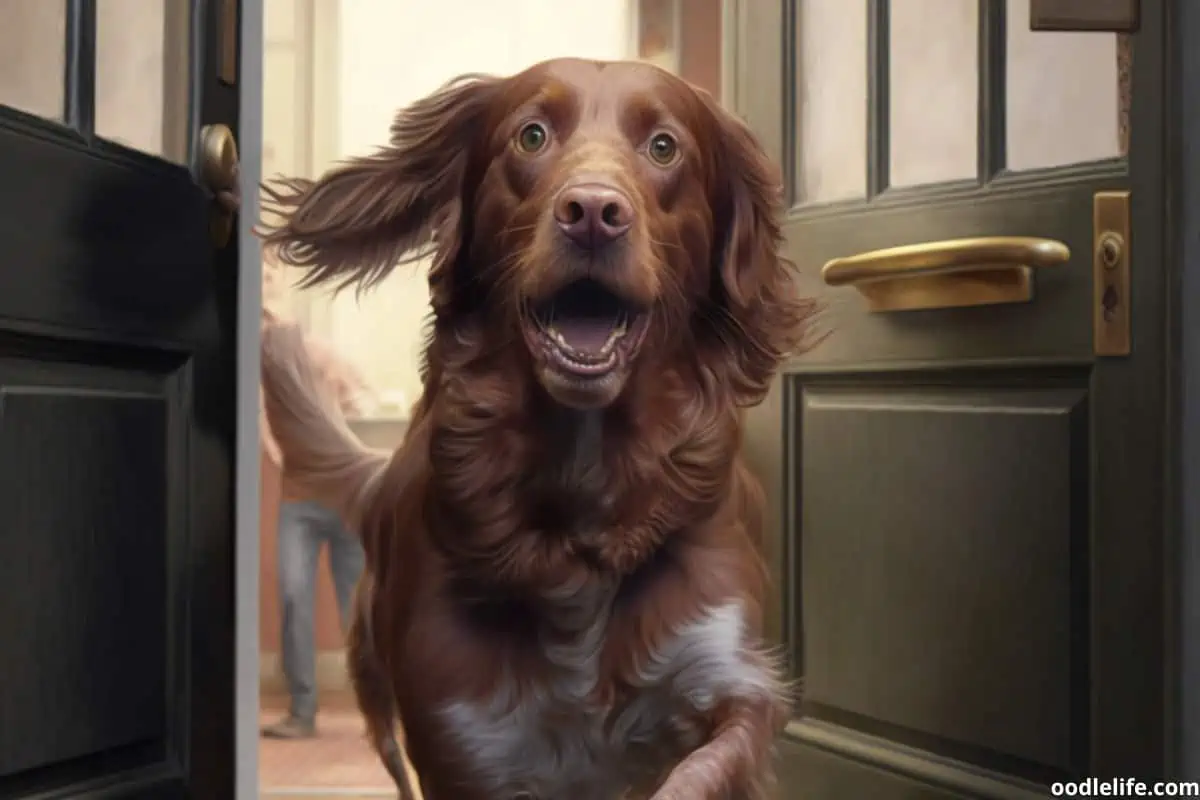
Separation Anxiety
Some dogs experience separation anxiety when their human companions are away, leading to accidents indoors. This can be due to nervousness or simply the inability to hold it in for extended periods. Keeping alone time less stressful and avoiding long periods of isolation can help alleviate this issue.
Inadequate House Training
A dog that hasn’t been properly house trained may not know where or when it’s appropriate to eliminate, especially when on their own. To combat this, increase potty breaks, and reward your dog for correctly peeing outside. This will reinforce appropriate behavior and gradually reduce indoor accidents.
Medical Issues
When a dog pees in the house, it could be due to an underlying medical condition. If you suspect this could be the case, consult your veterinarian to diagnose and address any potential ailments.
Marking Territory
Some dogs pee in the house to mark their territory, which can be triggered by various stimuli in their environment. Identifying these triggers, such as the arrival of new pets or changes in the household, can help in addressing this behavior.
By understanding these common reasons for indoor accidents, pet owners can better address the issue and help their canine friends feel more comfortable when alone in the house.
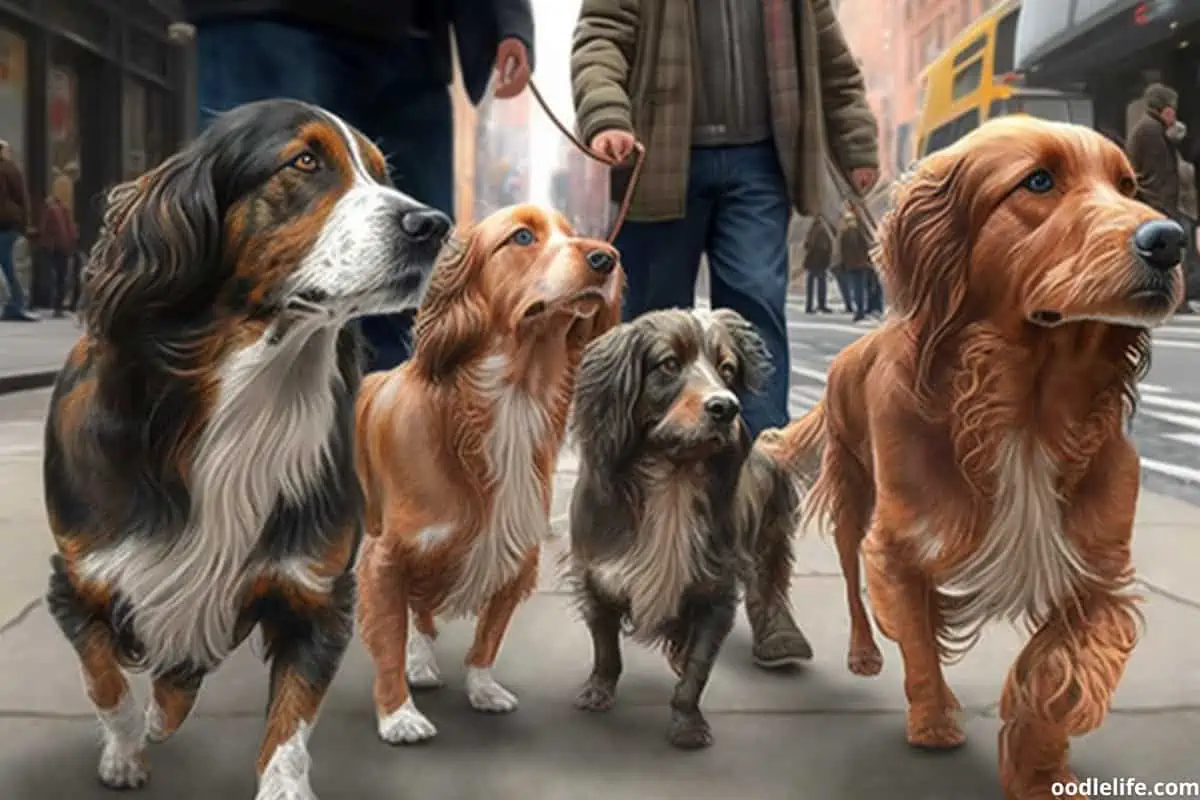
Preventing and Correcting Peeing Behavior
Establish a Routine
Establishing a consistent routine plays an important role in preventing unwanted peeing behavior. Ensure your dog has a regular feeding schedule, followed by timely potty breaks. Like humans, dogs thrive on routines and knowing they can rely on being taken outside to relieve themselves can significantly reduce anxiety and accidents.
Crate Training
Crate training is an effective method to prevent your dog from peeing in the house when alone. Dogs naturally do not like to eliminate in their sleeping area. Train your dog to associate their crate with comfort and security. Start by gradually introducing the crate and increasing the time spent inside. Soon, the dog will see the crate as their safe haven, and they will be less likely to pee inside it.
Proper House Training Techniques
It is crucial to utilize proper house training techniques to curb unwanted peeing. Begin by taking your dog outside frequently, allowing them to sniff around and find a suitable spot. Accidents happen when dogs have to wait too long between bathroom breaks, so ensure regular outings. Additionally, observe and learn your dog’s signals indicating when they need to relieve themselves, and respond accordingly.
Use Positive Reinforcement
Patience and positive reinforcement are key factors in correcting peeing behavior. Always praise and reward your dog when they eliminate outside in the appropriate area. By creating positive associations with going potty outside, your dog will become more motivated to hold it until you take them out. Avoid scolding or punishing your dog for accidents, as this may increase anxiety and make the problem worse.
Addressing Separation Anxiety
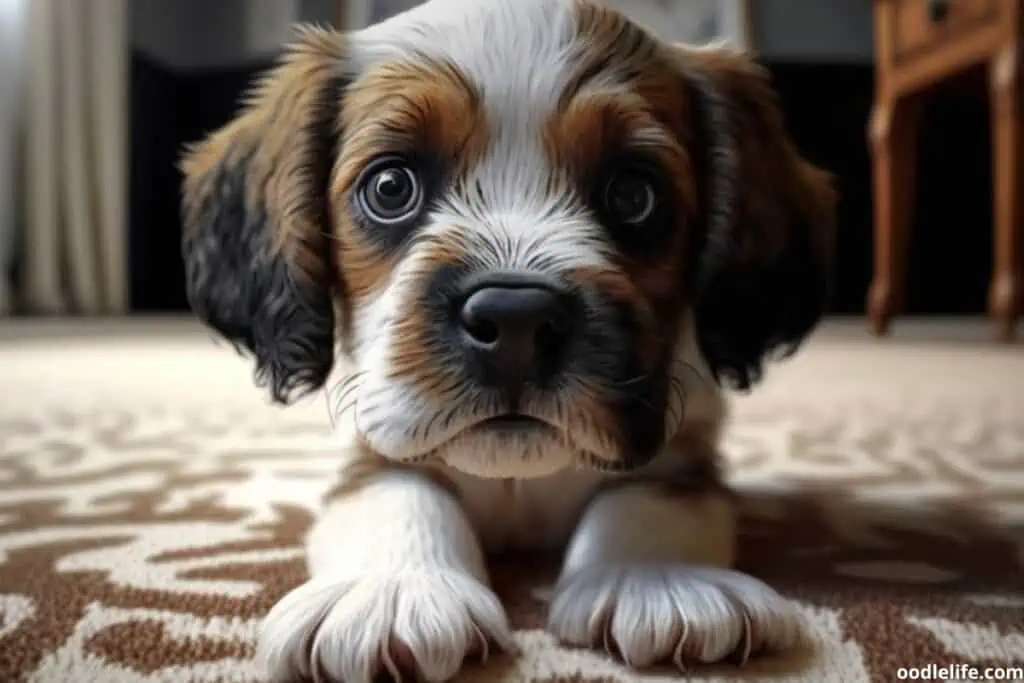
Gradual Desensitization
Gradual desensitization is an effective method for addressing your dog’s separation anxiety. It involves slowly acclimating your dog to being alone by increasing the time spent apart in gradual intervals. For instance, start with just a few minutes of separation and gradually work your way up to longer periods.
This process can help reduce the dog’s anxiety and create a positive association with being alone. In some cases, it may be helpful to incorporate a toy or treat that your dog only gets when you’re away to further reinforce the positive association.
Create a Safe Space
Consider creating a safe, comfortable space for your dog to spend time while you’re away. This space should be separate from areas that trigger their anxiety, such as the front door or window sills. You can use a crate or separate room, and make it more inviting by adding familiar toys, bedding, or calming aids like pheromone sprays.
Having a designated area for your dog to retreat to when feeling anxious can help minimize destructive behaviors, like urination or chewing on household items, and facilitate a sense of safety and comfort.
Seek Professional Help if Necessary
If your dog’s separation anxiety seems too severe or doesn’t improve with these techniques, consider seeking professional assistance from a dog trainer, behaviorist, or veterinarian. They can help create a tailored behavior modification program designed to address your dog’s specific needs and could recommend medication in some cases.
Remember, patience and consistency are key when dealing with separation anxiety. While it can be frustrating, addressing these behaviors and providing support for your furry friend will make both you and your dog much happier in the long run.
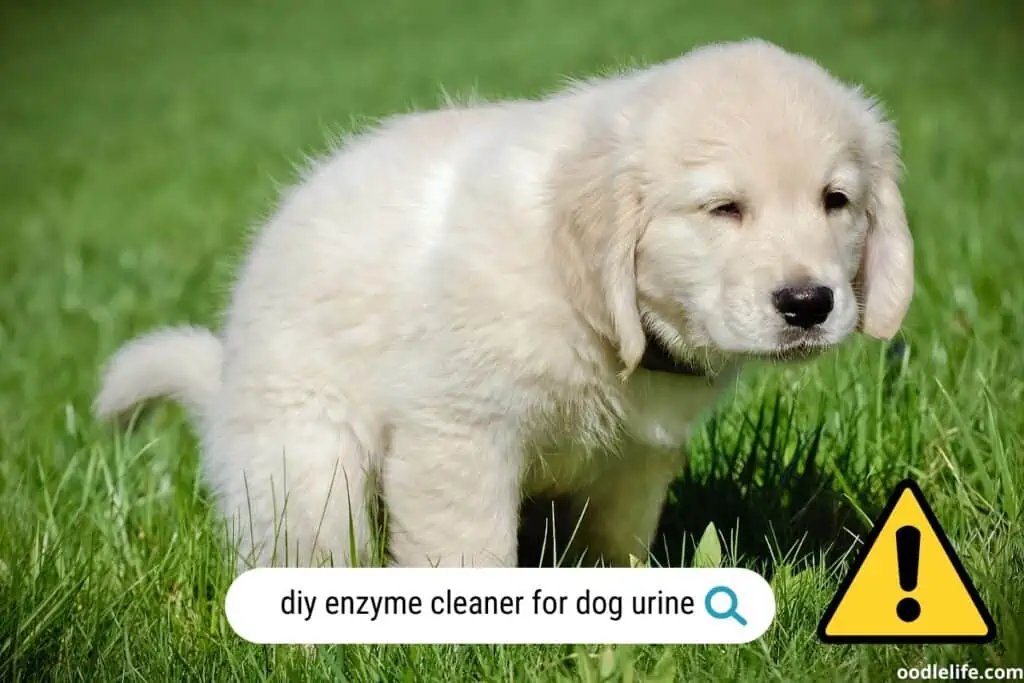
Investigating and Treating Medical Issues
Before assuming that your dog is peeing in the house due to behavioral issues, it’s essential to consider possible medical problems that may be causing this behavior. This section will guide you through the steps to consult your veterinarian, address underlying health conditions, and consider medications if necessary.
Consult Your Veterinarian
If your dog is suddenly peeing in the house when alone, it’s essential to schedule a visit to your veterinarian to rule out any medical issues. Be prepared to provide your vet with an accurate account of your dog’s medical history and any recent changes in behavior or environment that could be relevant to the problem.
Address Underlying Health Conditions
Once your veterinarian has examined your dog, they may identify an underlying health condition, such as arthritis or a urinary tract infection, which could be causing the house soiling.
In these cases, it’s crucial to follow your vet’s advice and implement necessary treatments or lifestyle adjustments. For example, if arthritis is making it difficult for your dog to get up quickly enough to go outside to pee, you may need to invest in orthopedic pet beds, ramps, or steps to help your dog move more comfortably.
Additionally, an increased frequency of potty breaks can help your dog establish a more manageable bathroom routine.
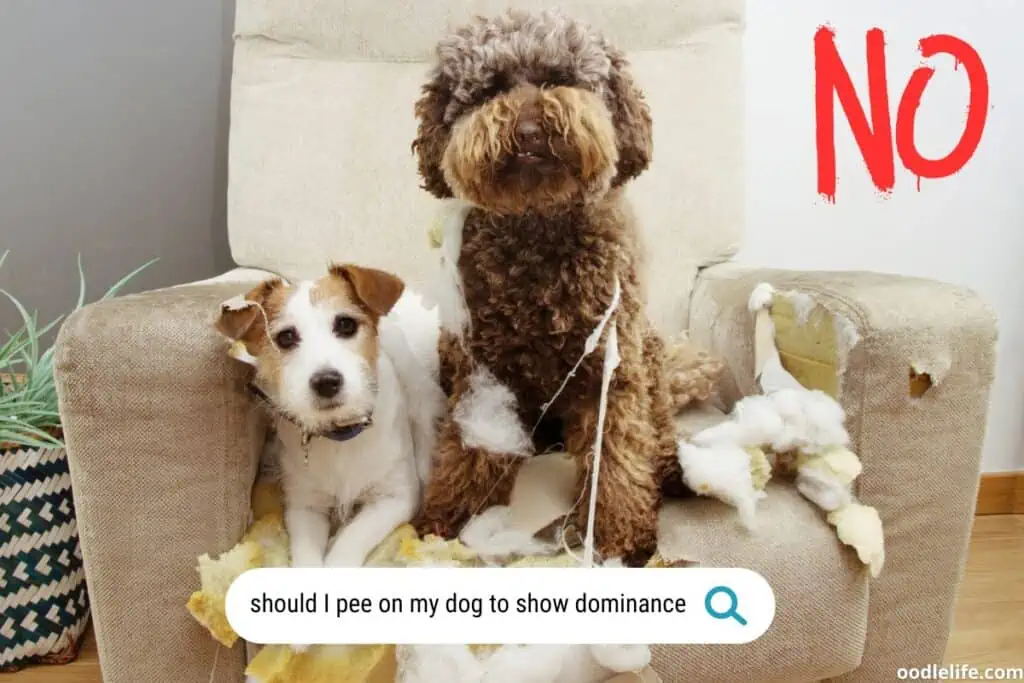
Consider Medications
In some cases, your veterinarian may prescribe medication to help manage your dog’s house soiling. For instance, if anxiety is causing your dog to urinate when left alone, your vet may recommend an anti-anxiety medication to help your dog feel more comfortable and secure in your absence.
Always follow your veterinarian’s instructions regarding dosage and administration, and never administer any medication without first consulting your vet.
Through thorough investigation and proper treatment of potential medical issues, you can help your dog overcome their house soiling habit while addressing any underlying health conditions or anxieties. Remember that patience and consistency are key, and it’s important to work closely with your veterinarian to ensure the well-being of your beloved pet.
Conclusion
In summary, preventing a dog from peeing in the house when alone involves a combination of proper training, timely bathroom breaks, and addressing any underlying medical or behavioral issues. As they say, “A well-trained dog is a happy dog.”
Remember to reward your furry friend for their successes and provide them with a comfortable, clean environment. As you stay consistent with your efforts, your dog will surely master the art of holding it in, and you’ll both enjoy a cleaner, pee-free home. Cheers to conquering canine bathroom etiquette!